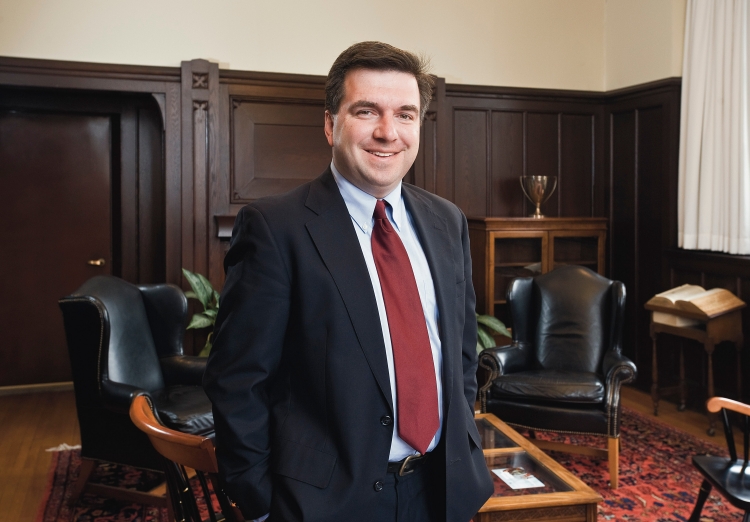
[NOTE: In March of 2014, Quigley was appointed as provost and dean of faculties for Boston College.]
The College of Arts and Sciences is BC’s oldest and largest school. How do you describe its mission, both as an institution in its own right and as a part of BC?
The liberal arts have long stood central to Jesuit higher education, and the College of Arts and Sciences is the proud home to nearly 500 faculty and over 6,000 students who are committed to exploring the humanities and the natural and social sciences.
Our 22 departments and numerous interdisciplinary programs introduce students to various ways of knowing, and to different approaches to finding truth. Our faculty is responsible for the vast majority of teaching in the core curriculum, helping to ensure a common conversation across the University community.
There is considerable discussion nowadays, as there has been at other times in the past, about the value and relevance of a liberal arts education. What answers does A&S have for such questions?
A recent e-mail brought news of the American Association of Colleges and Universities’ study that indicates the persistent and material benefits of a liberal arts education. All of us in Arts and Sciences are mindful of the significant pressures that our students and graduates face in the contemporary labor market. We continue to believe that the education we offer in A&S offers students a particularly valuable foundation for living lives of meaning and impact.
One area of growth for the school over the past couple of decades would seem to be the natural sciences: biology, chemistry, physics, earth sciences. What impact has this had in terms of faculty, students and other aspects of A&S?
It’s been one of the most significant changes since I arrived at Boston College as a junior faculty member in 1998. We should all be proud of what the scientists on campus have achieved in a relatively short time. Our students certainly have access to a growing number of world-class researchers.
But the school has certainly maintained its commitment to the humanities. What are some prime examples of this?
I’d point to several examples of how the humanities are thriving at Boston College. Stokes Hall is a tangible example of our commitment to humanistic study, and I’ve been thrilled to see the History Department’s “Making History” exhibitions on the third floor of the south wing. The persistent popularity of the PULSE and Perspectives programs indicates the central place of theology and philosophy in the education of many of our undergraduates. And each semester’s show at the McMullen Museum of Art gives evidence of the lively and interdisciplinary collaborations that occur regularly across our humanities departments.
You mentioned Stokes Hall: Even though it has only been open a year, you see an impact?
I’m teaching my second course in Stokes this semester and I’m very pleased with how the building works as a teaching space. A walk through Stokes in the evenings is inspiring, as so many students make use of the building to study and to collaborate. The liberal arts are very much alive in the classrooms and corridors of Stokes Hall.
Talk about some of the more immediate goals and objectives of the school.
We’ve been hiring a remarkable cohort of new faculty in the last half-decade and we’re working hard to support these new colleagues as scholars and teachers. We continue to work on the renewal of the undergraduate core curriculum, which I view as critical to Boston College’s continuing success over the next decade.
Long-term, what do you see as possible priorities and projects for A&S?
I hope that we’re able to continue investing in the natural sciences and in the creative arts, to draw the very best students to Boston College and to help fuel the spirit of imagination and exploration on campus.
What’s a fact about A&S that might surprise people?
Our creative arts programs, such as music and theater, are not only popular among undergraduates but also have a profound impact on campus life: Look at all the concerts featuring student performers, or the productions at Robsham Theater, or BC’s annual Arts Festival. Yet most of these programs were created only in the last 30 years.
Read our next "Conversation" with School of Theology and Ministry Dean, Mark Massa, SJ



